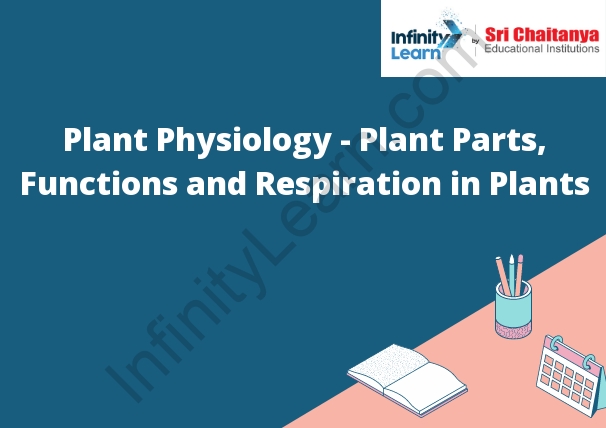Table of Contents
Plant Physiology Meaning
Plant physiology is the study of the physical and chemical processes that occur in plants. It covers a wide range of topics, from photosynthesis to water uptake to plant diseases.
Plant physiology is the study of the function of plants. It covers a wide range of topics, from photosynthesis to water uptake. Plant physiology can be divided into five main branches: photosynthesis, transpiration, water uptake and transport, mineral nutrition, and hormone regulation.
Photosynthesis is the process that produces organic molecules from simple inorganic molecules from the sun’s energy. Transpiration is the loss of water vapor from the plant leaves. Water uptake and transport is the process of water absorption by the roots and its transport to the leaves. Mineral nutrition is the process of taking up minerals from the soil and incorporating them into plant tissue. Hormone regulation is the process by which plant hormones control various physiological processes.

Plant Parts and Functions
The plant body is composed of the root, stem, leaves, and flowers. The root is the underground part of the plant that anchors the plant in the soil and absorbs water and minerals from the soil. The stem is the main stalk of the plant that supports the leaves and flowers. The leaves are the green parts of the plant that capture sunlight and convert it into energy. The flowers are the reproductive parts of the plant that produce seeds.
Plants are living things that need sunlight, water, and minerals to live. They make their own food through a process called photosynthesis. Plants have different parts that have different functions.
The root is the part of the plant that anchors it in the soil. The root also takes in water and minerals from the soil.
The stem is the part of the plant that holds the leaves and flowers. The stem also takes in water and minerals from the soil.
The leaves are the part of the plant that take in sunlight. The leaves use the sunlight to make food.
The flowers are the part of the plant that attracts pollinators. The flowers use the pollinators to spread pollen.
Mineral Nutrition in Plants
Plants are able to take up mineral ions from the soil and use them in various biochemical processes to create their own tissues. The uptake and use of minerals is controlled by a number of factors, including the availability of minerals in the soil, the plant’s need for the mineral, and the plant’s ability to take up the mineral from the soil.
Plants use minerals in a number of ways, including as building blocks for tissues, as catalysts for biochemical reactions, and as electron acceptors or donors in photosynthesis. Plants also use minerals to regulate physiological processes, such as water uptake and photosynthesis.
The availability of minerals in the soil is controlled by the soil’s pH, the type of minerals present in the soil, and the amount of organic matter in the soil. Soil pH affects the solubility of minerals in the soil, and the type and amount of minerals present in the soil depends on the parent material of the soil and the weathering that has taken place. The amount of organic matter in the soil affects the ability of the soil to hold water and nutrients, and the ability of plants to take up minerals from the soil.
Nutrition Transportation in Plants
Plants use water and minerals from the soil to create food through a process called photosynthesis. The food is transported throughout the plant to where it is needed. The plant’s vascular system, made up of xylem and phloem, carries the food. The xylem carries water and minerals from the soil to the leaves, and the phloem carries the food from the leaves to the rest of the plant.
Photosynthesis in Higher Plants
Photosynthesis is the process that produces organic molecules from simple inorganic molecules from the sun’s energy. The process of photosynthesis occurs in the chloroplasts of photosynthetic cells. Light energy is converted into organic matter, such as glucose. The process of photosynthesis is a two step process. The first step is the light-dependent reaction, and the second step is the light-independent reaction.
The light-dependent reaction is the first step of photosynthesis. The light-dependent reaction uses light energy to convert water and carbon dioxide into oxygen and glucose. The light-dependent reaction occurs in the thylakoid membranes of the chloroplasts. The light-dependent reaction is a two step process. The first step is the light-activated process, and the second step is the light-independent process.
The light-activated process is the first step of the light-dependent reaction. The light-activated process uses light energy to convert water into oxygen and protons. The light-activated process occurs in the photosystem II complex of the thylakoid membrane. The light-activated process is a two step process. The first step is the light-activated process, and the second step is the light-independent process.
The light-independent process is the second step of the light-dependent reaction. The light-independent process uses the energy from the light-activated process to convert carbon dioxide into glucose. The
Respiration in Plants
In plants, respiration is the process of breaking down food molecules to release energy in the form of ATP. This energy is used to power the plant’s processes, such as growth and reproduction.
Respiration in plants occurs in the mitochondria of the plant cells. The process of respiration begins with the plant taking in oxygen from the air. The oxygen is then used to break down the food molecules in the mitochondria. This process releases energy in the form of ATP. The ATP is then used by the plant to power its processes.









